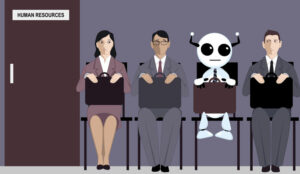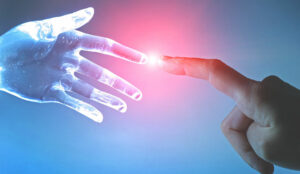Stephen Ball of Aspect Software discusses how customers are becoming increasingly comfortable with human-mimicking robots in customer service.
As advanced technologies with machine learning capabilities become more and more commonplace and the general public become more accustomed to interacting with these types of technologies and virtual assistants – such as Amazon Alexa and Google Home – more organisations are looking at how they can incorporate these innovations into the customer service function.
But how do the public feel about these technologies and are they comfortable communicating with a Google Duplex-style robotic customer service agent?
We recently conducted research which found that over half of consumers (52%) would be comfortable communicating with a customer service robot that closely mimics human behaviour over the phone, demonstrating a growing acceptance of human-like technology in customer service.
However, there are still some reservations and concerns around this, particularly about the impact this will have on the role of human agents.
The survey, which polled 2,000 consumers from across the UK, found that 27% would be completely comfortable dealing with a Google Duplex-style robotic customer service agent, rising to 38% for those aged 16-24.
However, more than four in ten (43%) also said that they would not be comfortable with such technology, with 21% saying they would prefer a different method of communication, and 22% saying that they find human-mimicking technology like this unsettling.
This underlines the importance of being balanced when it comes to adopting new customer service channels, and being wise to the widely varying preferences of consumers.
There is clearly potential for technologies like Google Duplex to make their mark in the world of customer service, especially amongst the tech-native younger generation. However, a significant amount of scepticism about such technology remains, especially among the older generations, so it is crucial that organisations temper this desire to increase the use of robots and automation with the need to cater to the preferences of their entire customer base.
When asked about what they would consider an acceptable use of technology in an automated customer service experience, 30% said that they would like to see a combination of technological and human input, with tech used to assist human agents in carrying out their jobs more effectively.
In addition, 38% said that they would like all customer service to be carried out by humans, with this figure rising to 44% when considering those aged 55 and over alone.
These figures show that the human touch is far from dead as far as customer service is concerned, despite the presence of technology and its power to improve the experience for many people.
Automation and self-service can go a long way towards making an organisation’s customer service more efficient and giving customers more choice when it comes to interacting with a business, but just as important is being able to reassure consumers that they will have the option to speak to a human agent if they need it.

Stephen Ball
Building a winning customer experience is about achieving balance: it’s short-sighted to pigeon-hole most of your customers into one particular category, so individual needs should always be taken into account.
Technologies like Google Duplex have a great deal of potential, but only if they aren’t implemented at the expense of choice of communication channel for the consumer. Differentiating from a customer service perspective is about understanding the context behind any customer interaction, and adopting an omnichannel approach to suit everyone.
Author: Guest Author
Published On: 21st Feb 2019 - Last modified: 26th Feb 2019
Read more about - Guest Blogs, Alvaria















